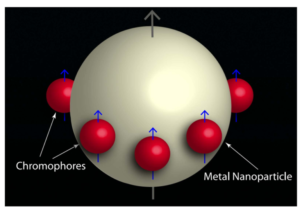
In this work we simulate the configuration of a spaser with all possible interactions allowed, in which all gain elements have identical features including two energy levels, to gain deeper understanding of the operational characteristics. We reason in an intuitively sound, yet mathematically rigorous, way how to exploit the symmetry of the most efficient method currently available to reduce the size of the problem. We explore a significantly efficient way of solving the full density matrix of coupled chromophore–plasmon systems under the conditions of identical, incoherently pumped, two-level chromophores and rotating wave approximated interaction Hamiltonians. We further explore some physical results as predicted by our method.
This work is supported by the Australian Government through NCI:Raijin under the National Computational Merit Allocation Scheme and Monash University through the NCI LIEF Strategic Partner Allocations.